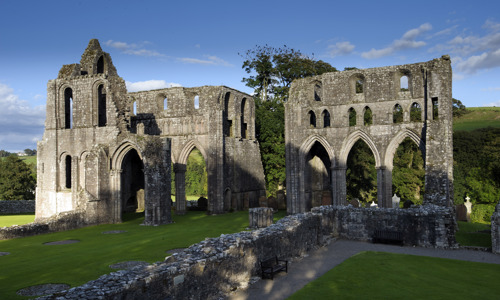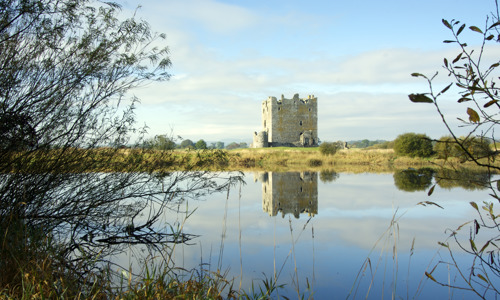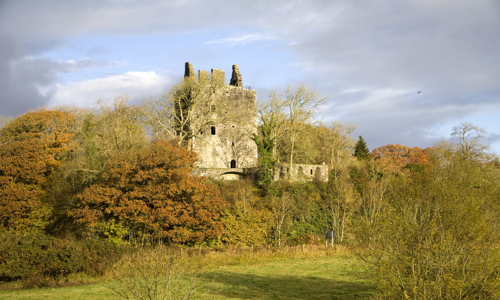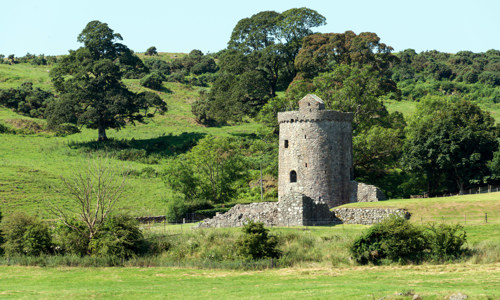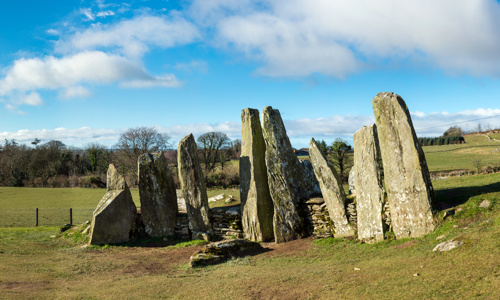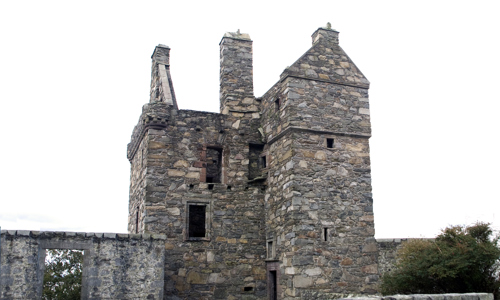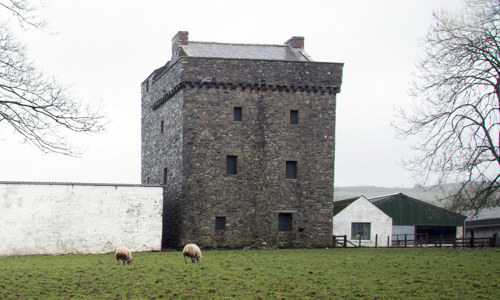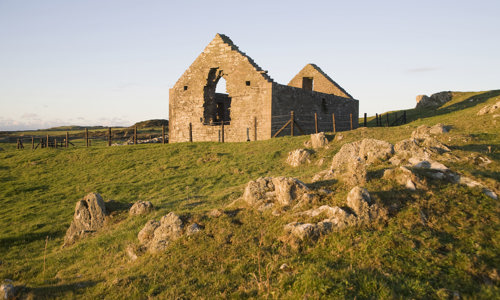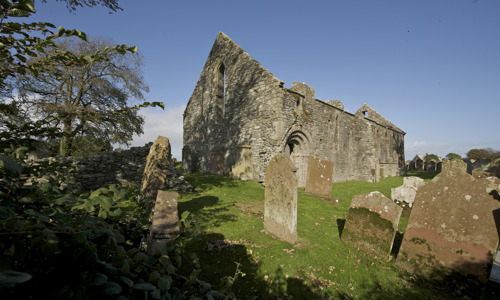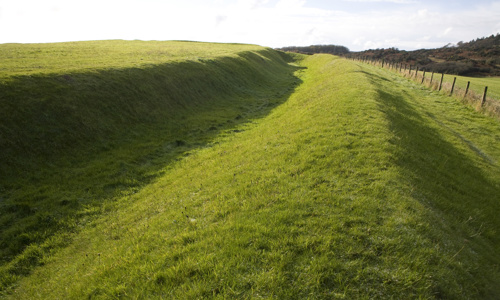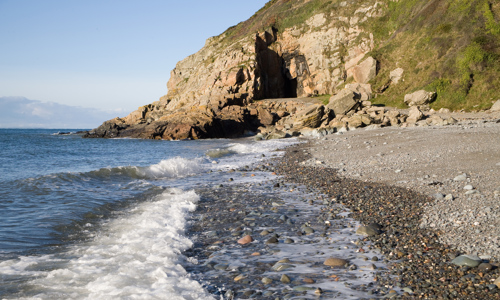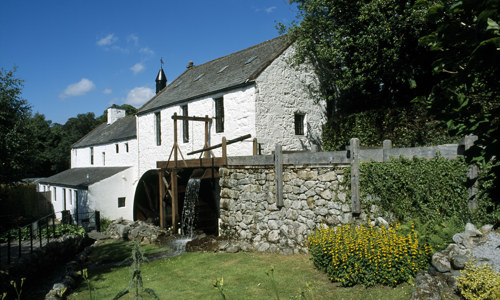History
MacLellan’s Castle is named after its original owner, Sir Thomas MacLellan of Bombie, Provost of Kirkcudbright. He began to build his castle on the site of the convent of Greyfriars, having acquired the land and buildings following the Protestant Reformation in 1560.
By 1582, the castle was complete enough for Sir Thomas to move in. Five years later, he and his second wife, Grissel, entertained James VI in their spacious townhouse.
After the couple’s death, the family’s prosperity waned as they ran up huge debts, chiefly through their part in the Plantation of Ulster – a scheme to settle Protestants in the north of Ireland.
By 1742, Sir Thomas’s descendant, William MacLellan, Lord Kirkcudbright, was working as a glove maker in Edinburgh. The family home was stripped of its roof and emptied of its contents. The neglected ruin came into state care in 1912.
An impressive townhouse
The design of MacLellan’s Castle reflects a deliberate change in tower house building in Jacobean Scotland. Gone were the overt displays of military strength seen in towers of previous centuries, like Threave Castle and Cardoness Castle. The new residences emerging were more obviously about domestic comfort than defence.
Sir Thomas didn’t do away with defence entirely, but reduced it to a minimum. The castle’s few wide-mouthed gun holes at ground-floor level and the pistol holes high above aimed to warn off individuals, not armies. They may also have been in fashion.
The castle’s unusual ground plan is based on a standard L-shape design, but has:
- an extra tower in the south-east corner
- two smaller projections between the main block and entrance wing – allowing easier movement around the house
Inside, the house is largely complete, except for its roof, fixtures and fittings. The stone-vaulted ground floor houses the kitchen and storage cellars. The upper floors contain around 15 family rooms. They include a great hall on the first floor, which has a large fireplace with a stone lintel almost 4m long.
Behind the fireplace is a rare survival of a laird’s lug (literally ‘lord’s ear’). From this hidden closet, the master of the house could spy on his guests in the great hall.


